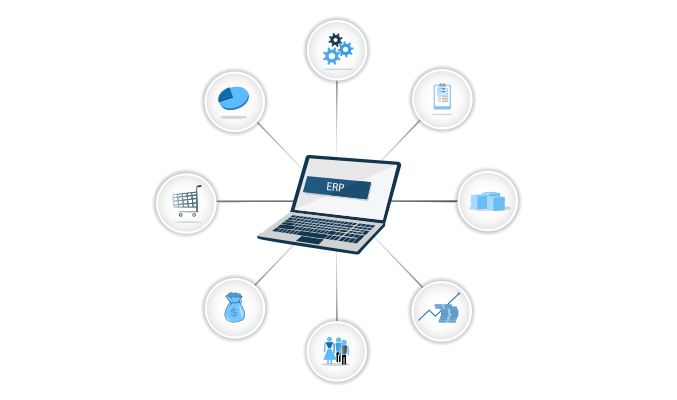Withholding HR and payroll data from employees? Unnecessary!


HR and payroll data – every salaried professional is well aware of these terms, but how many of these professionals have access to it? It might vary from enterprise to enterprise. But isn’t the employee data supposed to be shared transparently with employees? Of course, yes! Yet, many organizations hide HR and payroll data from employees.
It can be problematic for employees when they are kept in the dark about their own data. There are many instances where employees get stuck into unnecessary jams or get stranded by payroll errors or HR management mistakes – just because they don’t have access to their personal employment data. Picture this – your employees are getting into critical medical situations and have no idea about insurance policies or deductions. Or, they have to chase HR professionals to correct some information; or even worse, employees find out they have been shorted on their check without knowing deductions.
An ineffective knowledge-sharing culture can cost large companies over $47 million in lost productivity annually.
All of this can be sorted with just one solution – let your employees access, update, and manage their own HR and payroll processing data. Built-up communication and transparency are perhaps the most valuable features of a successful work environment.
Companies with a high-trust environment gain two to three times higher stock returns and have 50% lower turnover rates than competitors.
The high-trust environment is where employees can collaboratively and transparently share knowledge. But, as simple as it sounds, many firms aren’t still on board. Here’s why organizations try to keep HR and payroll processing data from employees and how they can stop information from withholding.
The numbers
These numbers are everything you need to see and understand why it’s crucial to effectively and transparently share HR and payroll processing data with employees:
- Delayed salaries can adversely affect the job satisfaction and personal financial outlook of 70% of people.
- Allowing employees to verify payroll processing data before it gets credited helps employees (35%) plan finances more efficiently, (28%) trust their employer even more, and (24%) better plan for changes in wages.
- 30% of employees wish to review the accuracy of their pay before it hits their salary accounts.
- 90% of employees find it beneficial to have 24/7 access to their HR data, including payroll, in one place.
- 77% of employees are frustrated with the outdated technologies they use at work, and 67% would instead take a pay cut for something twice as good.
Also Read: Employee Engagement Starts with Accurate Payroll Outsourcing
Why do organizations keep HR and payroll data from employees
After going through all the numbers showing how adversely hiding employee data can affect both the organization and employees, the most obvious question that arises is why do most organizations hide employee information? According to a survey, the reason could be the fear of losing power or having the leverage to know unique information.
Other reasons might also include the following:
- Identifying knowledge as our own property.
- Worrying that we will be judged on the basis of what we know.
- Disliking or distrusting those who ask us.
In a nutshell, organizations hide information because they fear the potential costs of sharing it. But does information hiding really benefit organizations? Of course not!
According to a survey, people who engage in knowledge hiding are over 17% less likely to thrive at work or experience growth and learning.
Knowledge or information withholding from peers does not actually result in a competitive advantage. It instead makes employees feel psychologically unsafe. It is evident that without psychological safety, employees find it challenging to focus on work, develop meaningful relationships, or explore new working styles without worrying about failures or mistakes. Under such circumstances, employees often struggle to maintain a positive attitude and engage in learning opportunities.
How can organizations stop withholding HR and payroll data from employees?
The HR department has one unique mission to work toward employees’ needs and wants. On top of that, some companies solely work to simplify your HR processes by providing best-in-class HR services – including payroll. Hiding employment data from employees with a negative attitude is only going to harm. Organizations must establish cultures where employees feel comfortable expressing their concerns. Addressing employee issues that are making them feel cynical can help you gain back their trust and help alleviate that cynicism.
Third-party, anonymous surveys can also do wonders in helping you figure out why your HR and payroll management professionals hold cynical attitudes. The results will help you design and implement targeted practices to ensure the workplace is fair, hopeful, and trustworthy for everyone. Moreover, you can also arrange workshops or training for HR management and payroll management teams on understanding employee behavior.
Lastly, HR and payroll outsourcing can essentially turn out to be beneficial. You wouldn’t have to worry about sensitive employee data getting lost or stolen and still can effectively and transparently share with employees. HR outsourcing services ensure that all the records are secure and provide best-in-class platforms where employees can easily access, maintain, or change their HR or payroll data.
Though all of these changes seem easy, implementing those won’t be. Withholding HR and payroll data from employees is widely prevalent in the workplace, which will take time to fix. However, being patient and acknowledging reality can be your first step toward developing an ideal workplace.
Conclusion
Most organizations that provide HR services or payroll processing services are aware of the fact that they are dealing with the most sensitive part of an organization – people. Employees are the most valuable asset that companies can have; thus, it is incredibly critical to help them feel satisfied and happy – which directly affects employee productivity and engagement. While all of this is well communicated, most organizations still make the common mistake of hiding HR and payroll data from employees. This makes your employees feel insecure and less satisfied with the work culture.
Exela HR Solutions is a leader in HR outsourcing and payroll outsourcing services that can help simplify all your HR processes, manage data securely, and implement practices to make your workplace ideal. Our experts provide the best-in-class, unified platform where your employees can easily access and manage all their data. Talk to our experts to discuss your requirements and solution for the same. Get Exela HR Solutions today!
DISCLAIMER: The information on this site is for general information purposes only and is not intended to serve as legal advice. Laws governing the subject matter may change quickly, and Exela cannot guarantee that all the information on this site is current or correct. Should you have specific legal questions about any of the information on this site, you should consult with a licensed attorney in your area.









